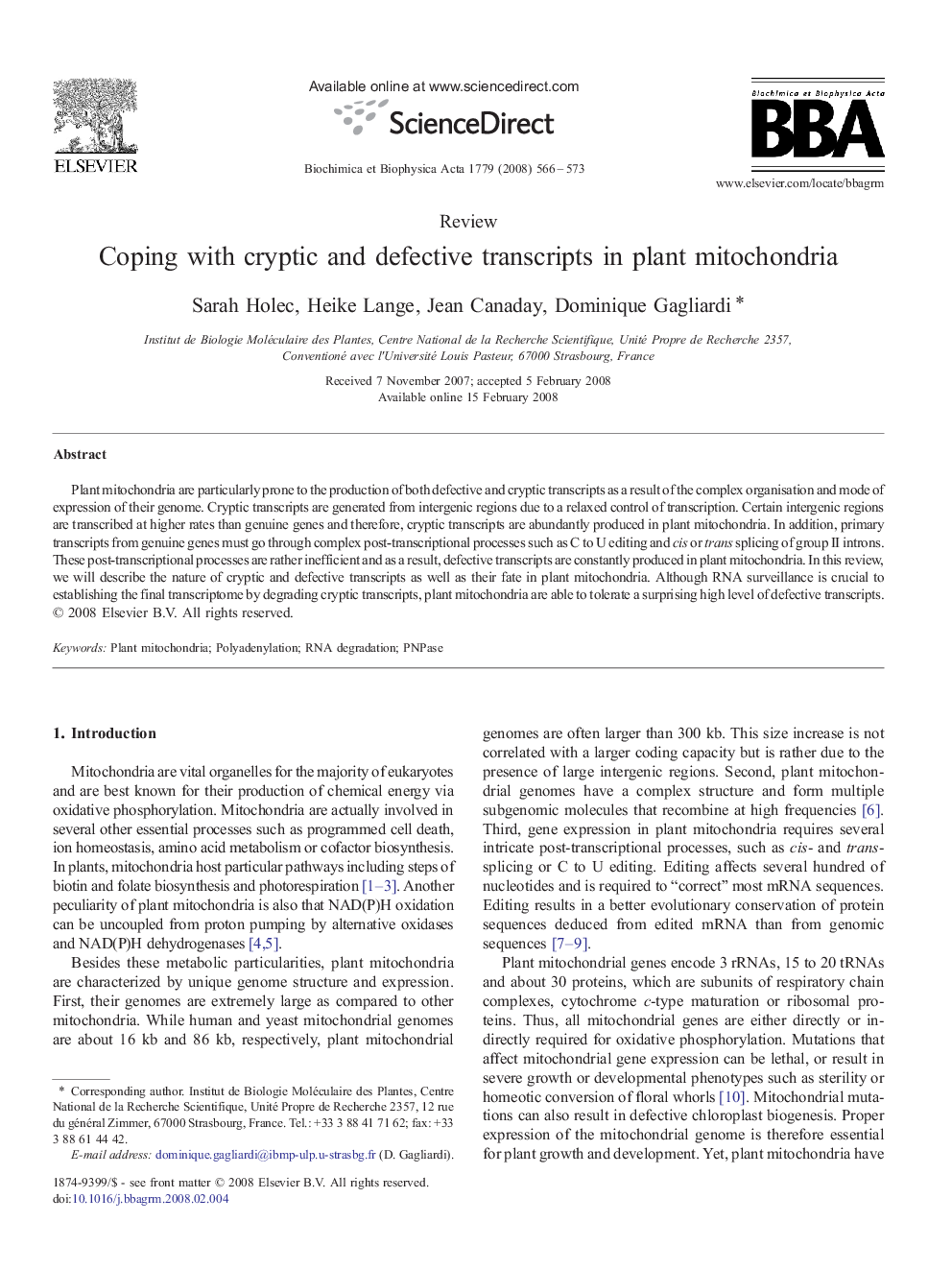| Article ID | Journal | Published Year | Pages | File Type |
|---|---|---|---|---|
| 1947054 | Biochimica et Biophysica Acta (BBA) - Gene Regulatory Mechanisms | 2008 | 8 Pages |
Plant mitochondria are particularly prone to the production of both defective and cryptic transcripts as a result of the complex organisation and mode of expression of their genome. Cryptic transcripts are generated from intergenic regions due to a relaxed control of transcription. Certain intergenic regions are transcribed at higher rates than genuine genes and therefore, cryptic transcripts are abundantly produced in plant mitochondria. In addition, primary transcripts from genuine genes must go through complex post-transcriptional processes such as C to U editing and cis or trans splicing of group II introns. These post-transcriptional processes are rather inefficient and as a result, defective transcripts are constantly produced in plant mitochondria. In this review, we will describe the nature of cryptic and defective transcripts as well as their fate in plant mitochondria. Although RNA surveillance is crucial to establishing the final transcriptome by degrading cryptic transcripts, plant mitochondria are able to tolerate a surprising high level of defective transcripts.
